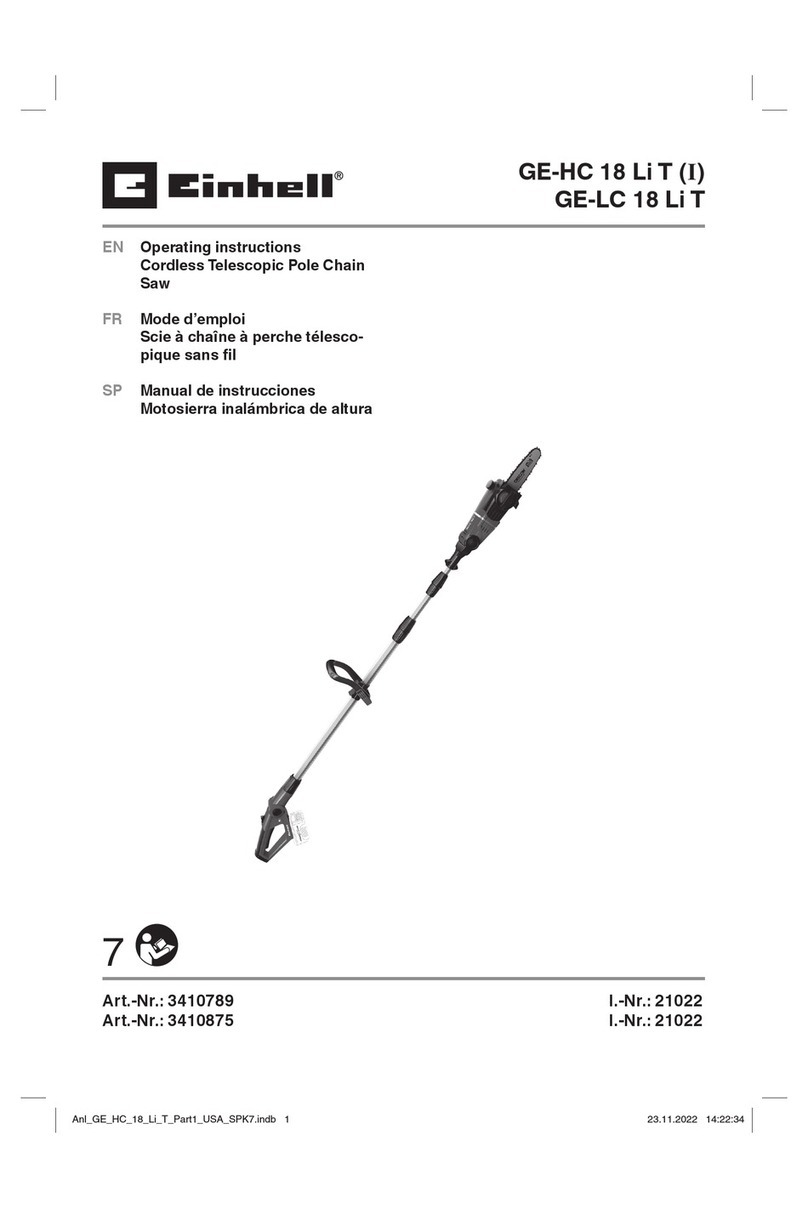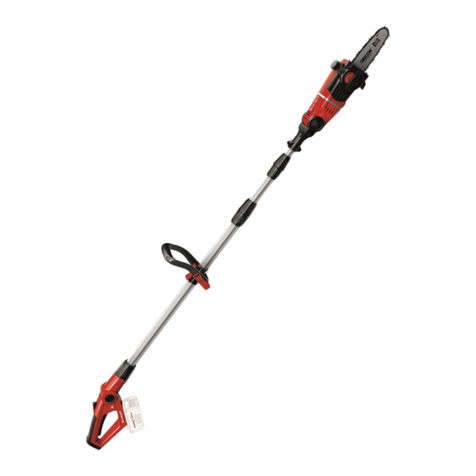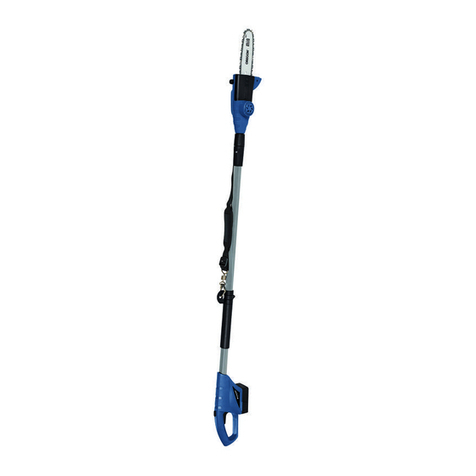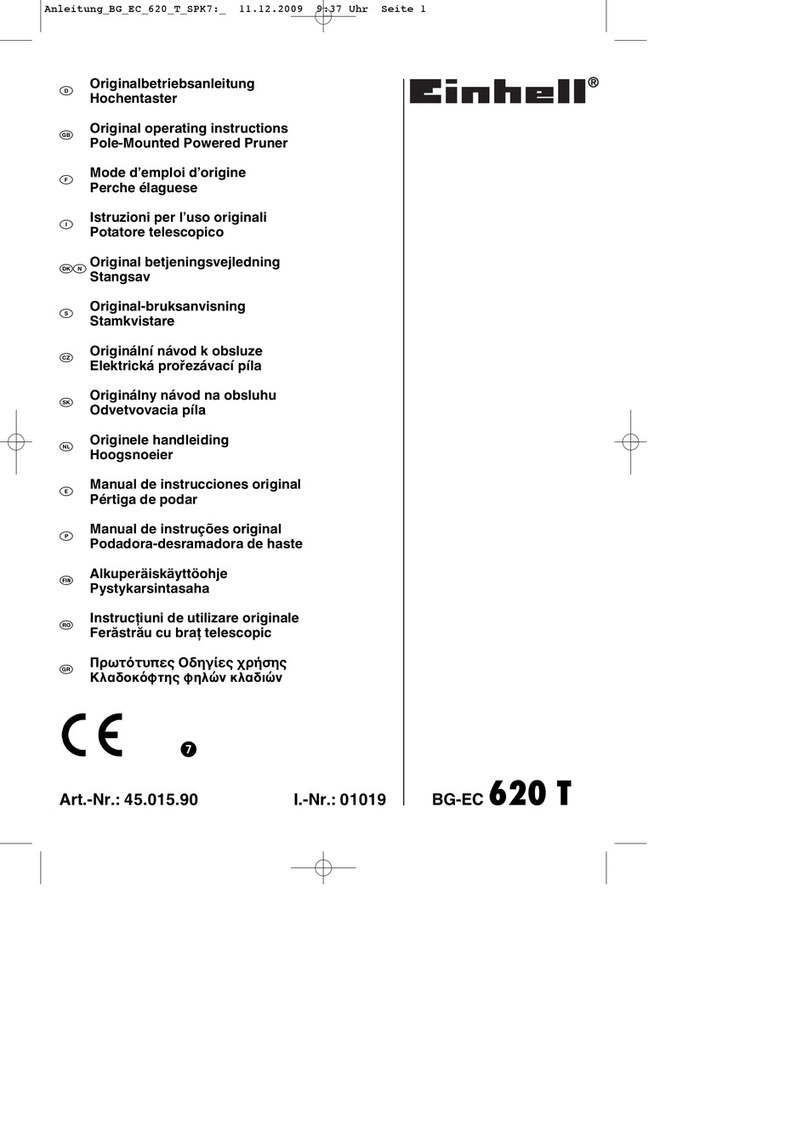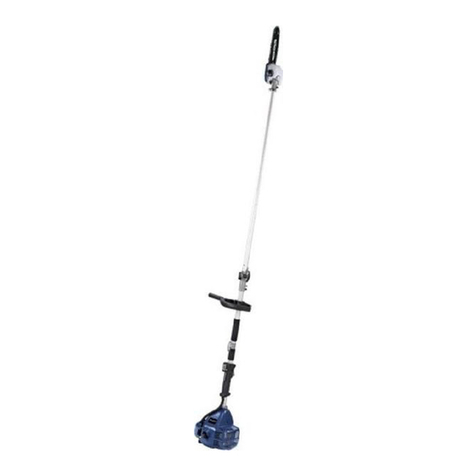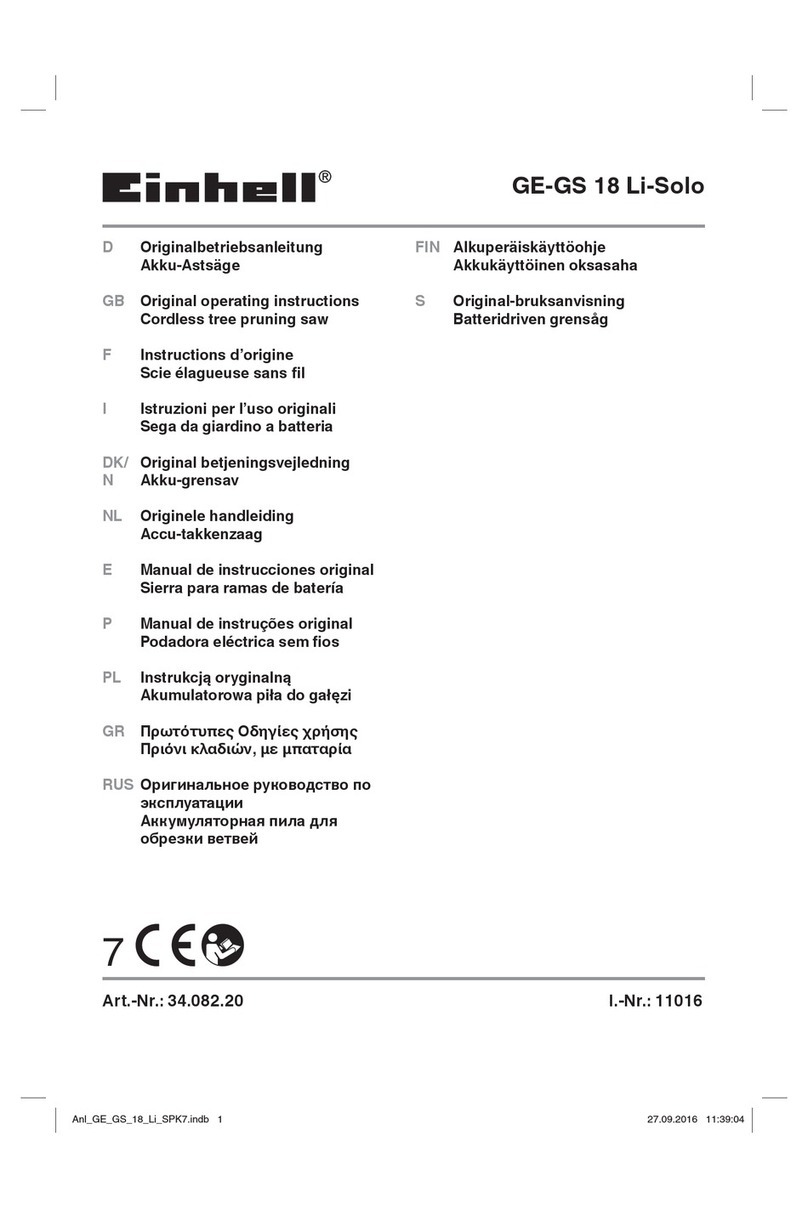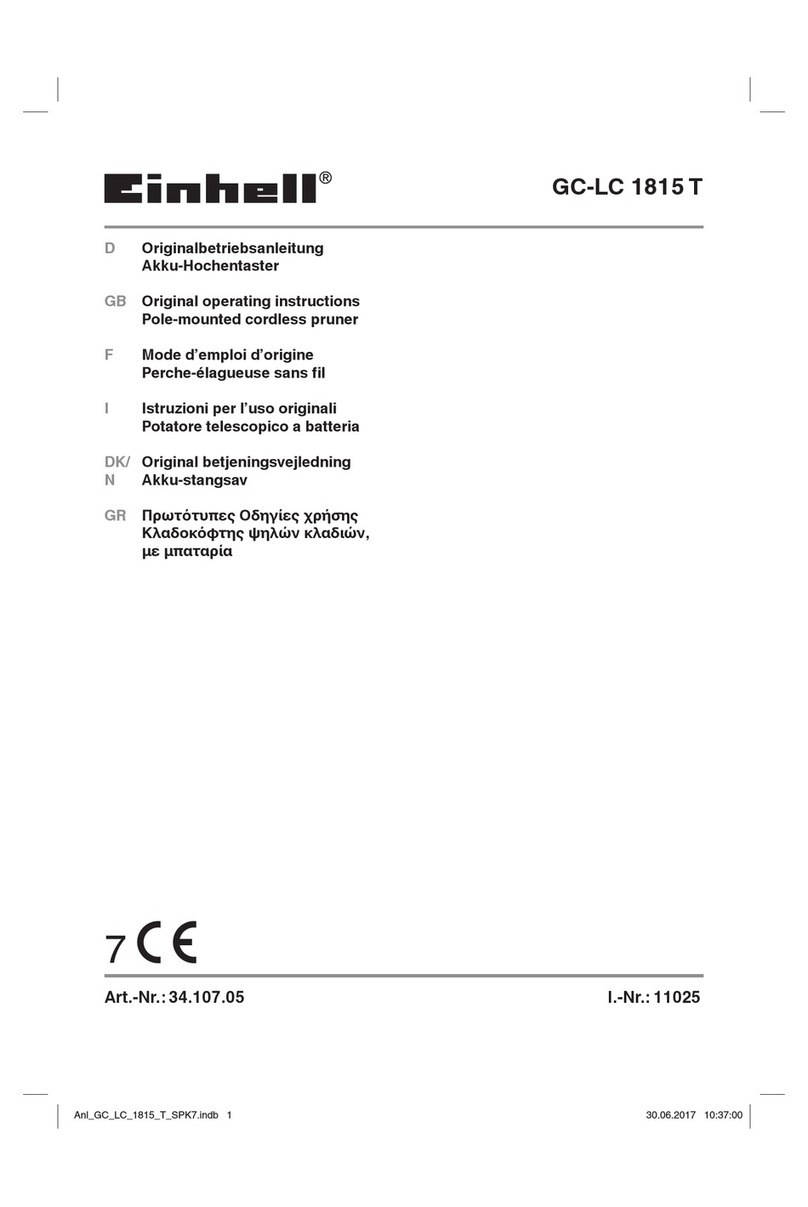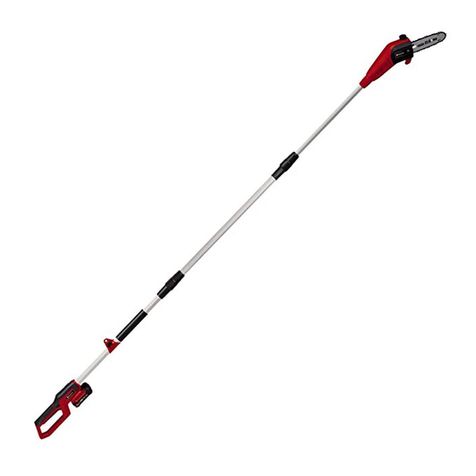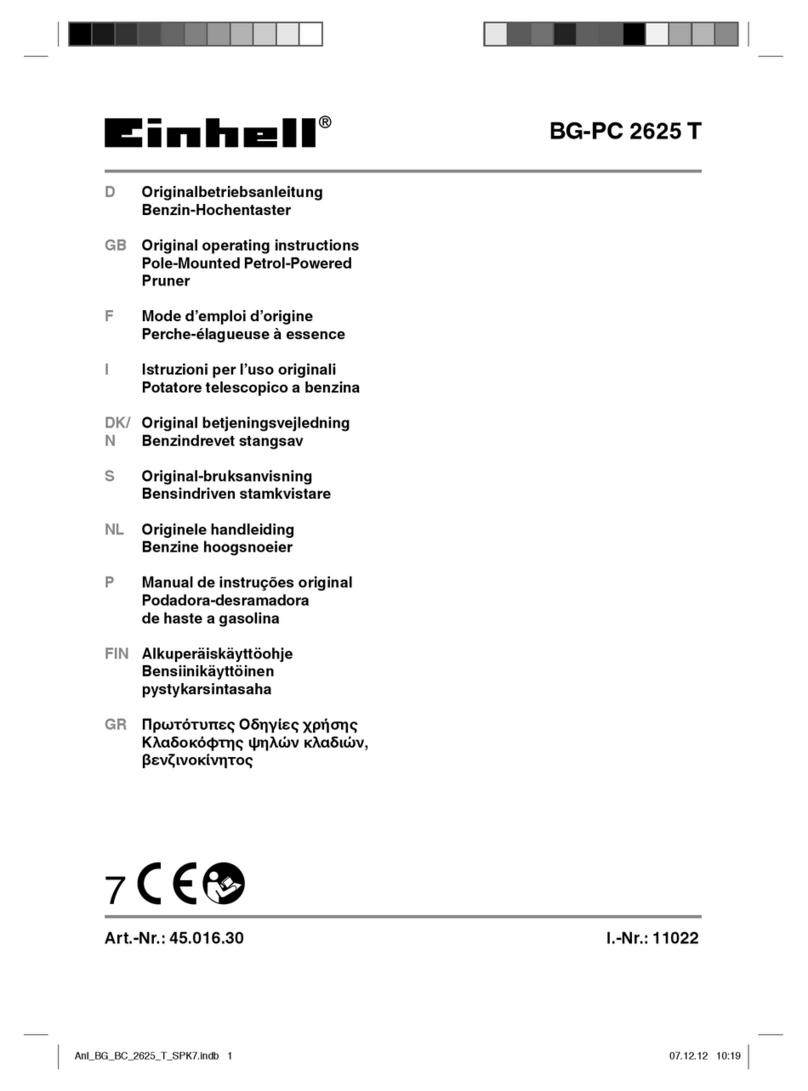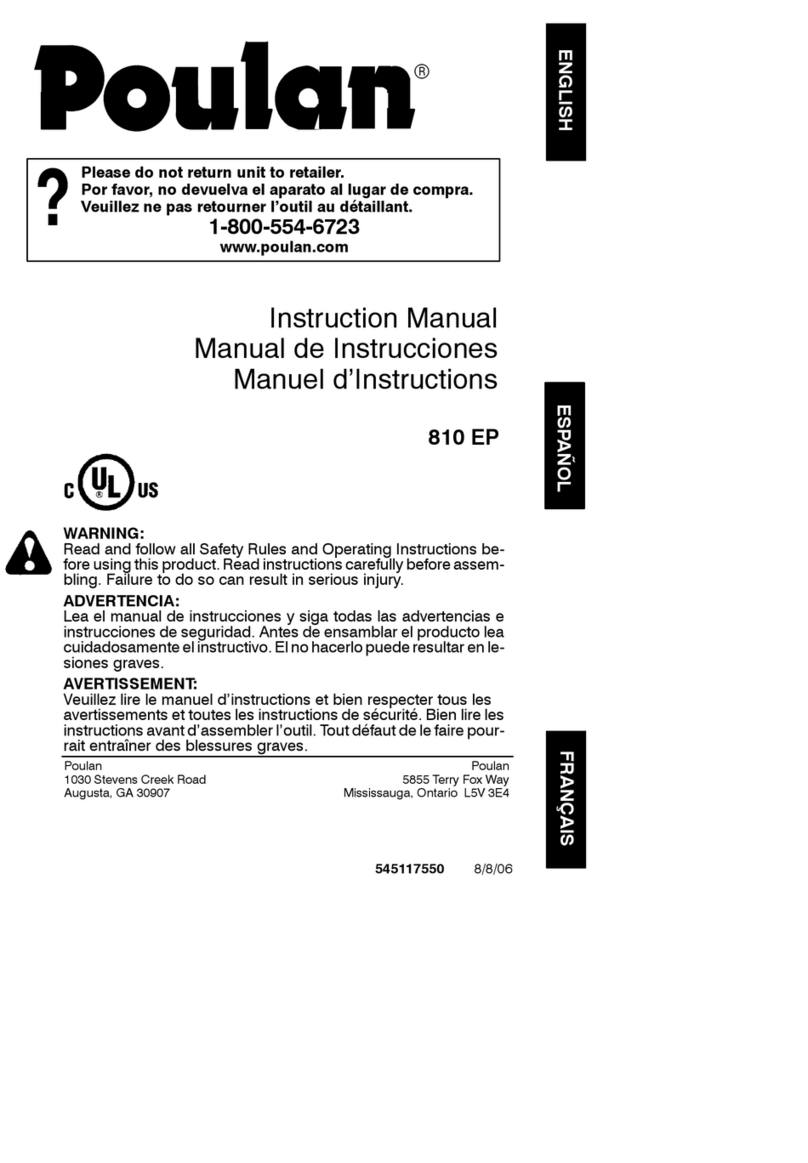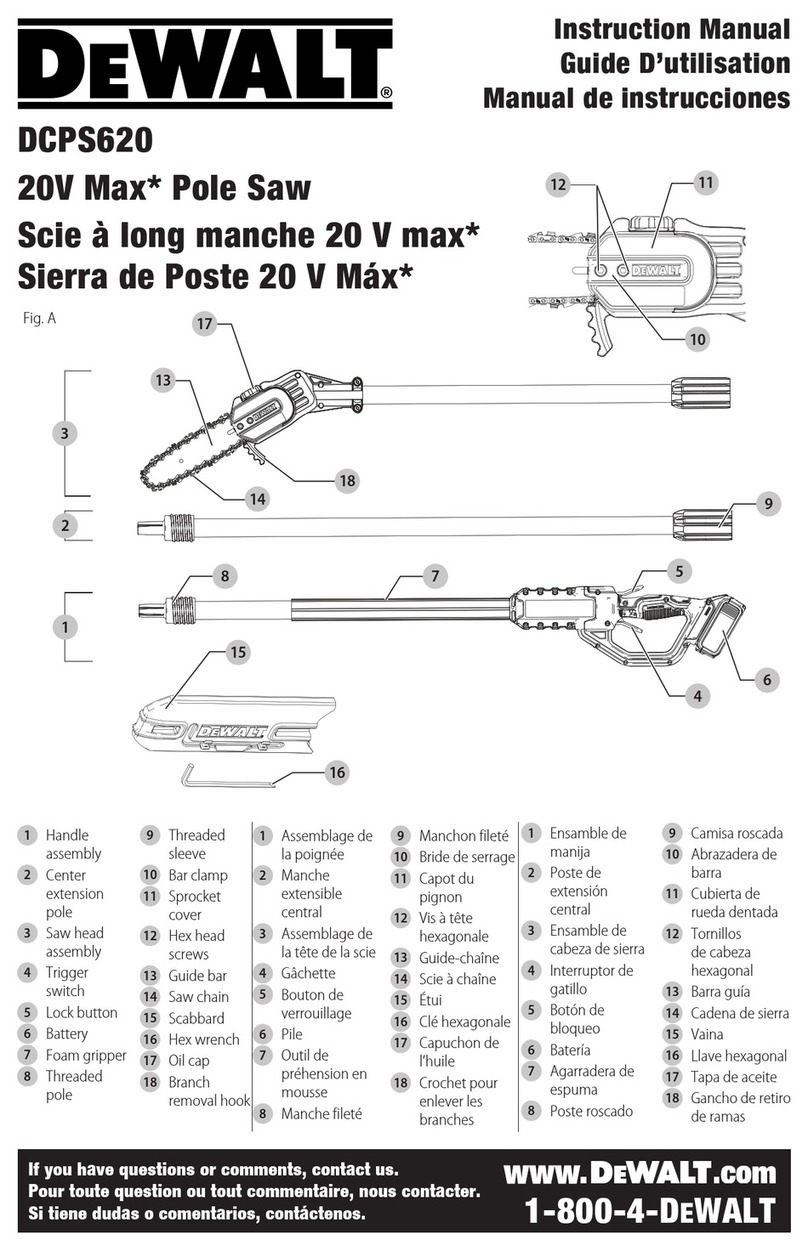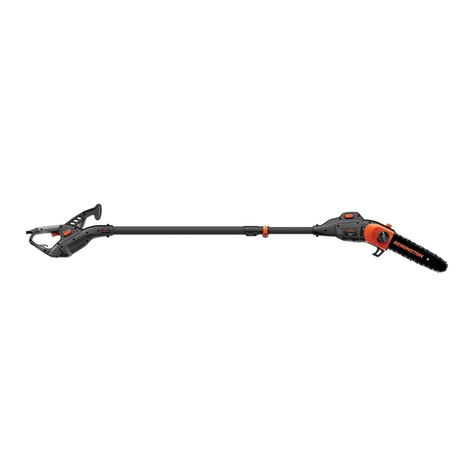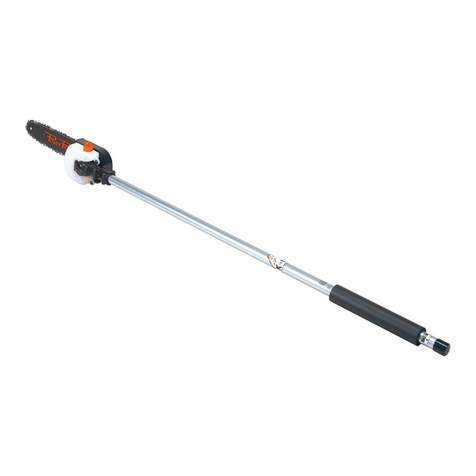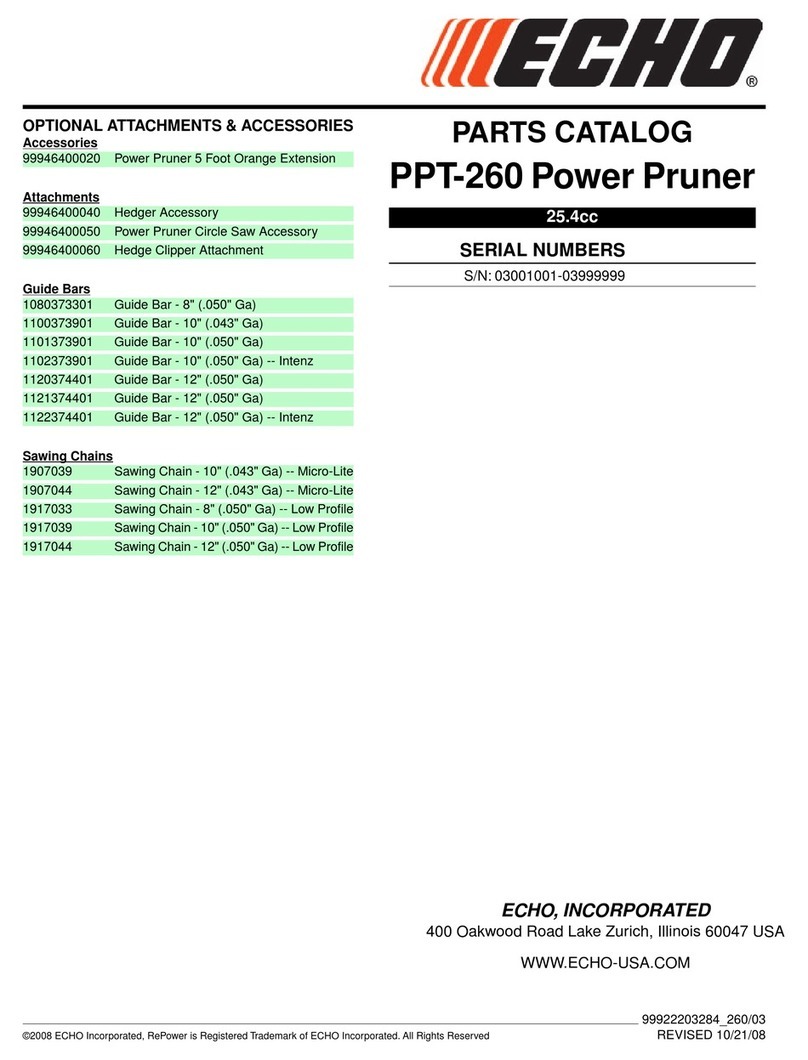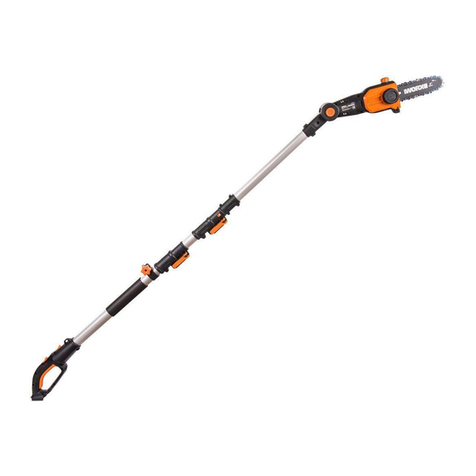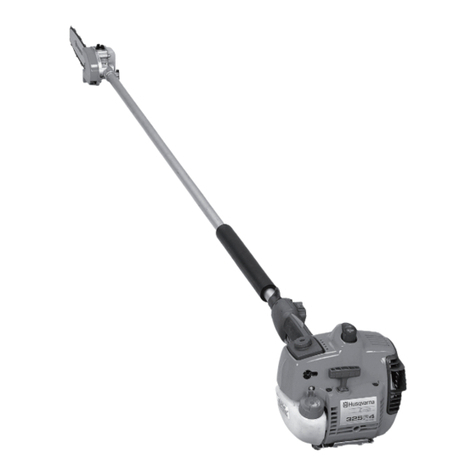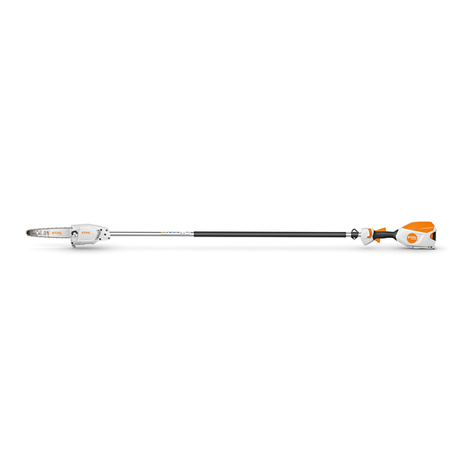
EN
- 8 -
DANGER!
When using the equipment, a number of safety
precautions must be observed to avoid injuries
and damage. Please read the complete operating
instructions and safety information with due care.
Keep these operating instructions in a safe place
so that the information is available at all times. If
you give the equipment to any other person, hand
over these operating instructions and the safety
information as well. We cannot accept any liability
for damage or accidents which arise due to
failure to follow these instructions and the safety
information.
1. Safety information
Read All Instructions
WARNING: When using electric gardening
appliances, basic safety precautions should
always be followed to reduce the risk of fire,
electric shock, and personal injury, including the
following:
FOR ALL APPLIANCES
• Avoid dangerous environments - do not use
appliances in damp or wet locations.
• Don’t use in rain.
• Keep children away - all people and pets
should be kept at a distance from the work
area.
• Dress properly - do not wear loose clothing or
jewelry.They can be caught in moving parts.
Wear protective clothing; use of work gloves,
long pants, a long sleeved shirt and safety
footwear is recommended when working
outdoors.Wear protective hair covering to
contain long hair.
• Use safety glasses - always use face or dust
mask if the area in which you are working is
dusty.The purpose of the safety rules is to
attract your attention to possible dangers.
The safety symbols and the explanations
with them, require your careful attention and
understanding.The safety warnings do not
by themselves eliminate any danger.The
instruction or warnings they give are not
substitutes for proper accident prevention
measures.
• Use right appliance - do not use appliance for
any job except that for which it is intended.
• Do not force appliance - it will do the job
better and with less likelihood of a risk of
injury at the rate for which it was designed.
• Do not overreach - keep proper footing and
balance at all times.
• Stay alert. Use common sense. Do not
operate appliance when you are tired or
under the influence of drugs, alcohol or
medication.
• When not in use, appliances should be stored
indoors in dry places out of reach of children.
• Maintain appliance with care. Follow
instructions for lubricating and changing
accessories. Keep handles dry, clean, and
free from oil and grease.
• Check damaged parts. Before using the
appliance, make sure the safety guards are
intact. Never use a tool without its safety
guard. Check the alignment of the moving
parts, the binding of the moving parts.
• Check for broken or defective parts that
can affect the safe operation of your tool. A
guard or other part that is damaged should
be properly repaired or replaced by an
authorized service centre unless indicated
elsewhere in this manual.
• Recharge only with the charger specified by
the manufacturer. A charger that is suitable
for one type of battery pack may create a risk
of fire when used with another battery pack.
• Use appliances only with specifically
designated battery packs. Use of any other
battery packs may create a risk of injury and
fire.
• When battery pack is not in use, keep it away
from other metal objects, like paper clips,
coins, keys, nails, screws or other small metal
objects, that can make a connection from
one terminal to another. Shorting the battery
terminals together may cause burns or a fire.
• Under abusive conditions, liquid may be
ejected from the battery; avoid contact. If
contact accidentally occurs, flush with water.
If liquid contacts eyes, additionally seek
medical help. Liquid ejected from the battery
may cause irritation or burns. (This advice is
considered correct for conventional NiMh,
NiCd, lead acid and Lithium-ion cell types. If
this advice is incorrect for a cell design that
differs from these, then the correct advice
may be substituted.)
• Do not use a battery pack or appliance that is
damaged or modified. Damaged or modified
batteries may exhibit unpredictable behavior
resulting in fire, explosion or risk of injury.
• Do not expose a battery pack or appliance
to fire or excessive temperature. Exposure to
fire or temperature above 266°F (130°C) may
Anl_GC_LC_18_20_Li_T_SPK7_USA.indb 8Anl_GC_LC_18_20_Li_T_SPK7_USA.indb 8 02.12.2022 08:24:4402.12.2022 08:24:44
